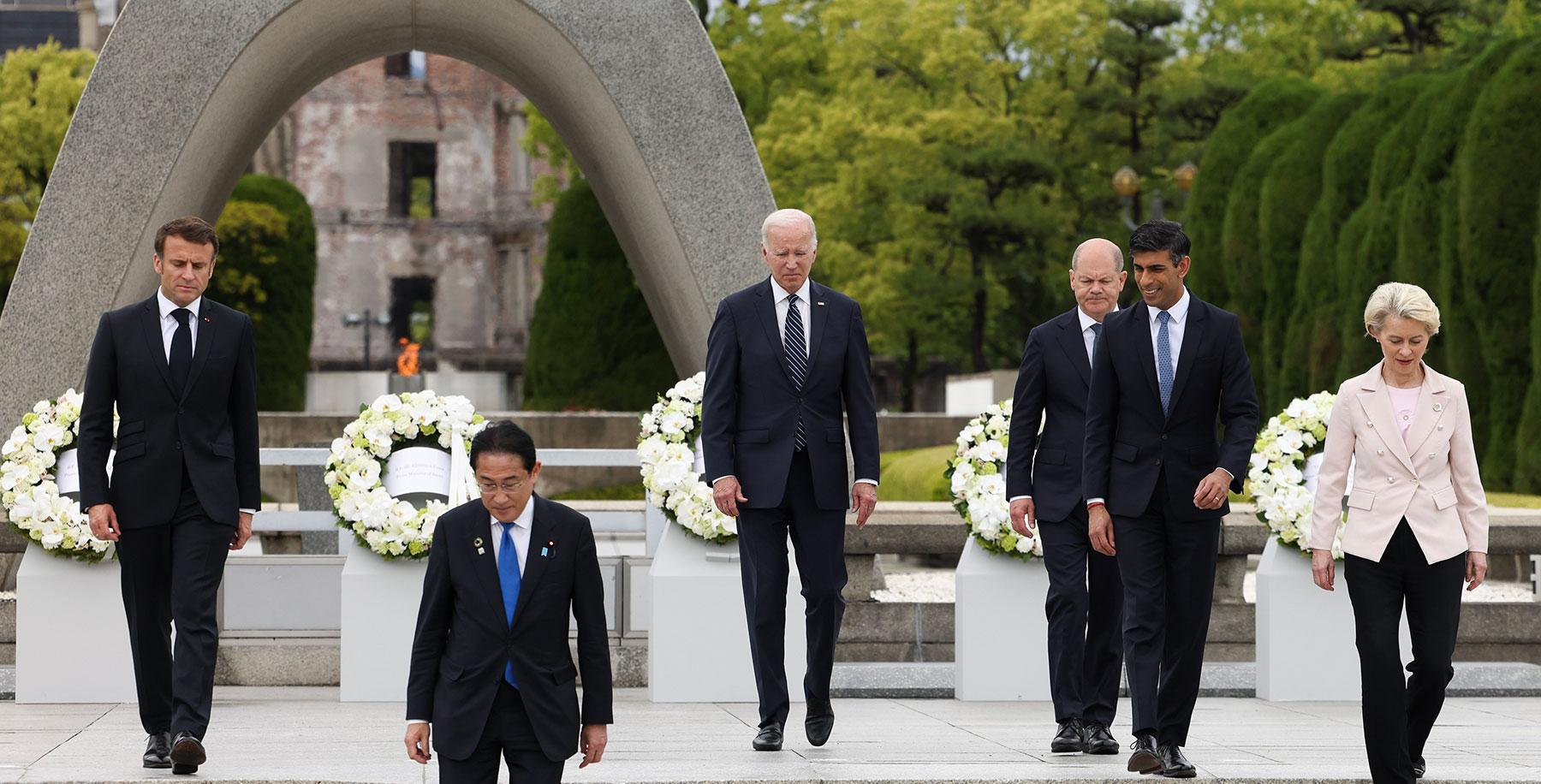The World in 2035: The Good, The Bad, and The Ugly
(votes: 3, rating: 4.67) |
(3 votes) |
Professor, Fudan University, Beijing Club for International Dialogue, Senior Fellow
Ph.D. in History, Academic Director of the Russian International Affairs Council, RIAC Member
The first quarter of the century is elapsing. With every passing year it becomes less and less appropriate to argue that we still live in the very beginning of the new millennium. Very soon the humankind will enter the second quarter of the XXI century. It’s high time to start reflecting about how the world might or might not evolve closer to 2050 or, at least, by 2035. How far can the disintegration of the current (post-WW2) world order could go within next ten years and how could it affect institutions, international regimes, bilateral and multilateral treaties, and other elements of the international system? What is likely to survive and what is not? When should the humankind hit rock bottom, and what is this rock bottom likely to be?
It seems clear that the disintegration of the current world order is still at its initial stage. So far, it has mostly affected a relatively narrow range of bilateral and multilateral institutions and regimes, where Russia plays a significant role—from the UN Security Council and the US-Russian strategic arms control regime to the Arctic Council and OSCE to global energy and food markets. However, what we see today might be only a tip of the iceberg since disintegration is increasingly affecting many other areas of global politics and economy—e. g. WTO and WHO, nonproliferation mechanisms and antiterrorist cooperation, various regional security and development institutions.
It seems that the cumulative impact of specific problems in various parts of the world has finally triggered an avalanche of formerly generally recognized norms, procedures and principles that had earlier maintained the global stability and international order. It would be therefore an oversimplification to argue that the ongoing crisis of multilateralism is caused by the sharp crisis in the relations between Russia and the West or the tensions between Beijing and Washington. The problems of multilateral institutions and regimes are deeper and are more universal.
This means that we cannot analyze the crisis of global governance without addressing some of the fundamental changes within nation-states. What we observe can be described as a long-term decay of the traditional mechanisms of social and political mobilization caused by the continuous social stratification and new means of social communication. In many countries, traditional political parties are losing their grip on power, legitimacy of core state institutions and procedures is questioned. The old political border lines between the Right and the Left, between Conservators and Liberals become less stable. As a result of these trends, nation-states (especially in the West) are more and more often governed by very fragile political coalitions that are extremely vulnerable to even minor fluctuations of the public sentiments and preferences. On course, it would be hard to expect such political coalitions to pursue a consistent and responsible foreign policy. The level of uncertainty in international relations continues to grow; the odds are that this trend will continue in future.
Is it possible to restore the acceptable level of global and regional governance on the “bottom-up” basis, that is, through a set of tactical, situational, transactional agreements on individual specific issues? If so, what are the least toxic and most promising issues in the near and more distant future? How could such agreements evolve into something more strategic, lasting and comprehensive?
The first quarter of the century is elapsing. With every passing year it becomes less and less appropriate to argue that we still live in the very beginning of the new millennium. Very soon the humankind will enter the second quarter of the XXI century. It’s high time to start reflecting about how the world might or might not evolve closer to 2050 or, at least, by 2035. How far can the disintegration of the current (post-WW2) world order could go within next ten years and how could it affect institutions, international regimes, bilateral and multilateral treaties, and other elements of the international system? What is likely to survive and what is not? When should the humankind hit rock bottom, and what is this rock bottom likely to be?
Roots of the Problem

The International System between Crisis and Revolution
The world of 2035 will be different from the world of 2024. The global population will add another billion, growing from eight billion today to almost nine, but the overall growth rates will continue to go down. The global warming is likely to cross the 1.5 degrees C threshold at some point between 2030 and 2035 triggering a chain of profound shifts in the planetary ecosystem. The global economic growth will continue though it might significantly slow down; Asia is likely to remain the key driver of the world’s economy with China being the most powerful economy on the planet. National economic priorities are likely to continue shifting from traditional GNP indicators to more comprehensive sustainable development parameters. By 2035, a large part of the humankind will live in what modern futurists call the “post-information economy”.
Of course, all these transitions might be distorted by various ‘black swans’ ranging from a new unforeseen deadly pandemic to a global nuclear war that can completely destroy the human civilization. Many other unpredictable tings may happen—at least, in theory—between 2024 and 2035 (by the way, have you seen “The Wondering Earth”?), but in this paper we limit ourselves to potential changes in the world order that exclude the most disastrous and the least probable scenarios.
It seems clear that the disintegration of the current world order is still at its initial stage. So far, it has mostly affected a relatively narrow range of bilateral and multilateral institutions and regimes, where Russia plays a significant role—from the UN Security Council and the US-Russian strategic arms control regime to the Arctic Council and OSCE to global energy and food markets. However, what we see today might be only a tip of the iceberg since disintegration is increasingly affecting many other areas of global politics and economy—e. g. WTO and WHO, nonproliferation mechanisms and antiterrorist cooperation, various regional security and development institutions.
Not all the disintegration trends are linked to the Russian - Ukrainian confrontation or even to US-China standoff. Some of the clear indicators of mounting problems became visible long before these unfortunate developments took place. For instance, the multilateral agreement on the Iranian nuclear portfolio (JCPOA) was stalled by the Trump Administration withdrawal already in 2018, and in 2019 Washington also withdrew from the Intermediate-Range Nuclear Forces Treaty (INF) with Moscow. An unprecedented migration crisis hit Europe in 2015. The infamous British vote on Brexit took place in 2016. An increased volatility in global commodity and financial markets started even earlier—at least after the 2007–2008 financial crisis. Regional multilateral institutions raging from GCC to ECOWAS also experienced difficulties for quite a long time. However, it seems that the cumulative impact of specific problems in various parts of the world has finally triggered an avalanche of formerly generally recognized norms, procedures and principles that had earlier maintained the global stability and international order.
It would be therefore an oversimplification to argue that the ongoing crisis of multilateralism is caused by the sharp crisis in the relations between Russia and the West or the tensions between Beijing and Washington. The problems of multilateral institutions and regimes are deeper and are more universal. The efficiency and even legitimacy of these institutions and regimes are put into question, political populists argue that these institutions are getting increasingly detached from ordinary people and represent only cosmopolitan self-serving elites. It is suffice to mention how Donald Trump and his supporters fiercely attack the United Nations or how European populists demonize EU bureaucracies in Brussels. In times of growing economic hardships, social strains and security threats such sentiments inevitably become more popular.
This means that we cannot analyze the crisis of global governance without addressing some of the fundamental changes within nation-states. What we observe can be described as a long-term decay of the traditional mechanisms of social and political mobilization caused by the continuous social stratification and new means of social communication. In many countries, traditional political parties are losing their grip on power, legitimacy of core state institutions and procedures is questioned. The old political border lines between the Right and the Left, between Conservators and Liberals become less stable. As a result of these trends, nation-states (especially in the West) are more and more often governed by very fragile political coalitions that are extremely vulnerable to even minor fluctuations of the public sentiments and preferences. On course, it would be hard to expect such political coalitions to pursue a consistent and responsible foreign policy. The level of uncertainty in international relations continues to grow; the odds are that this trend will continue in future.
Continuity and Change
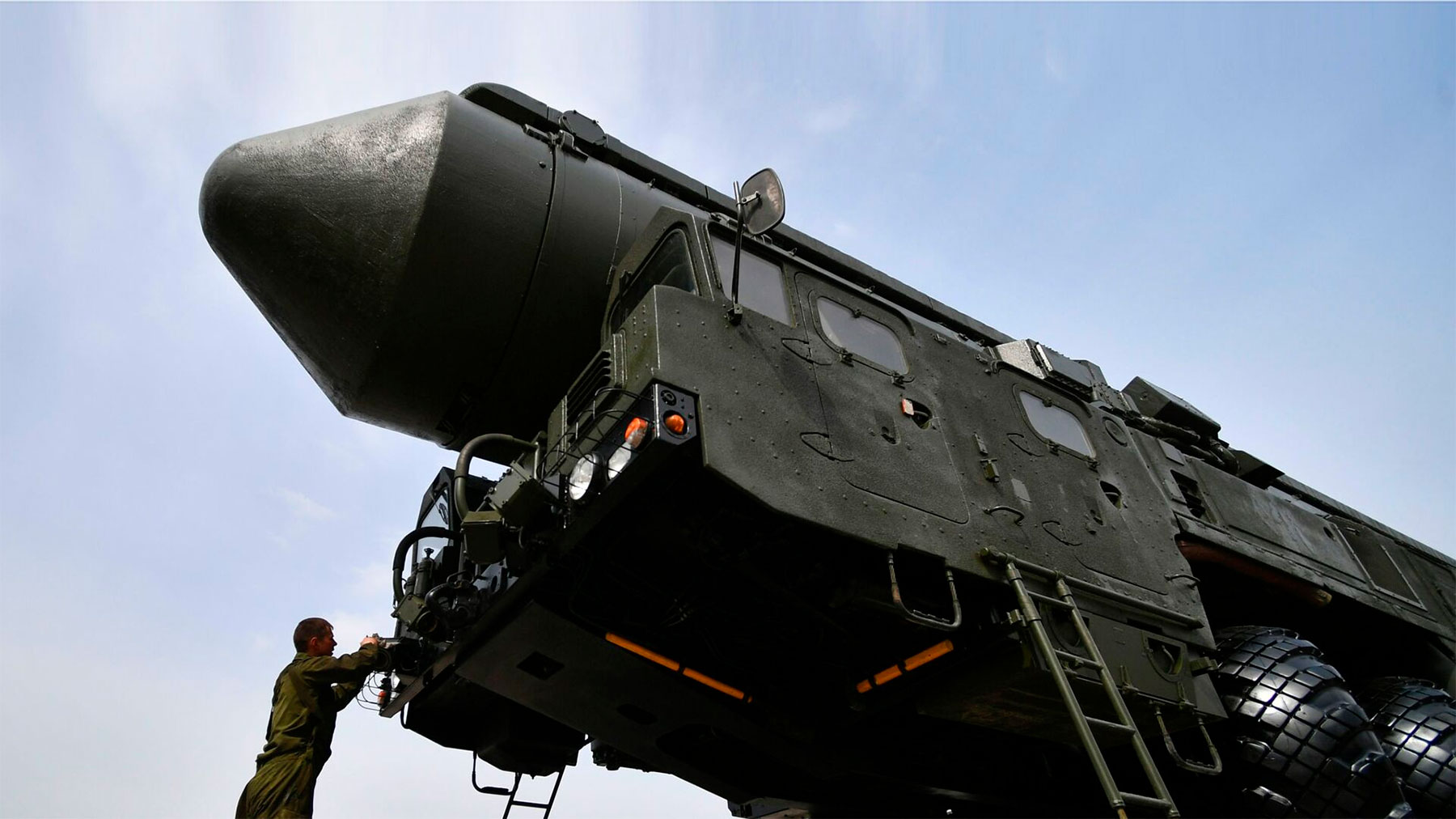
Prepare for the Worst and Strive for the Best. Russia’s and China’s Perceptions of Developments in International Security
There is little doubt that if present-day international trends continue—and it seems that they will—the international order will undergo even more profound and potentially more dangerous changes. One can only hope that some of the basic frameworks of the former international system and regimes will remain in place. On the one hand, they still reflect the common ideas and needs of the international community, and the multilateral platforms are still needed despite the deep divisions in the international community. On the other hand, the transformation of the present international order is still by nature an evolution on the original foundations rather than a revolution that would completely destroy the old one and re-establish a new one. One should not underestimate the resilience of many long-term international practices, rules and even habits and traditions; this resilience was demonstrated more than once over last two–three years. It is likely that in the 2035 world one will see many residuals of the 2024 world or even of the 1945 world.
However, in eleven years from now the authority of the old international regimes will be less respected, and their functional effectiveness will diminish, in the sense that they—or most of them—may become merely political or symbolic. Some functional mechanisms that cannot adapt to the new needs will fail or disintegrate, such as old security mechanisms between NATO and Russia, and the establishment of new security mechanisms in Europe will be a difficult and protracted process. It is hard to imagine that in 2035 we could see new well-developed properly institutionalized collective security systems in regions like the Northeast Asia or the Middle East. It is likely that the current institutional fatigue will remain strong in the foreseeable future and this fatigue will be a serious obstacle on the way of launching new global or regional institutions.
At the same time, already existing regional organizations and sub-international mechanisms reflecting common political, economic, and security demands of their members will not only survive, but may become more active protagonists, playing the most prominent role, such as the BRICS, the SCO, the EU, NATO, the ASEAN, the ALU, and so on. The institutional inertia accumulated by long-standing organizations should not be underestimated; it is almost impossible to imagine how the North Atlantic Treaty Organization can be dissolved or even radically transformed. Instead, it is highly likely that at least some of these multilateral institutions will grow in numbers of their respective members. One could also predict more flexible arrangements within some of such institutions that could blur the red line between membership and partnership (e. g. BRICS+). The price for the enlargement will be a more complicated and cumbersome decision-making process as well as a looser discipline in such organizations.
Unlike the United Nations, regional or even global problem-focused institutions are composed of like-minded members and are therefore more politically coherent and functionally effective. The rise of such institutions may inadvertently contribute to a further fragmentation of the international system. In other words, the existence of a unified international order will be more symbolic, while the role of regional organizations and sub-international mechanisms will be more substantive (problem-based), and emphasis of the structure of the international order will shift from a major multilateral to a minor multilateral (mililateral) mechanisms. In sum, the world of 2035 will be more fragmented than the world of 2024, which will make the task of delivering global commons increasingly challenging.
The Crisis of Statehood
An important question in the ongoing transformation is about how could the erosion of the world order might or might not affect individual states. Is it possible to avoid a further deepening of the crisis of statehood and domestic social and political institutions of fragile states in various parts of the world? Will the gap between successful and unsuccessful states deepen or not? What will be the impact of likely state crisis on economic growth, technological progress, the environment and climate change, on global food and energy security, on the proliferation of nuclear weapons and other weapons of mass destruction, and on international migration?
The crisis of statehood is likely to continue—at least, in some parts of the world. By 2035, that we will see more ‘failed states’ in places like Middle East, Africa or even South Asia. National identities in some of these states remain very weak and the sense of belonging to a particular nation is often less powerful than a sense of belonging to a tribe, a region or a religious confession. These problems will also be amplified by growing transborder migrations that frequently produced mixed or parallel identities. Today, about 184 million people (2,3% of the global population) live outside of their country of nationality. These numbers can easily double by 2035.
Since small and weak countries have a weaker capacity for self-protection than large and powerful countries, they tend to feel the impact of the disintegration of the international order more intensely, and their environment for survival and development deteriorates. How to adapt to this environment is a major challenge for them. In addition to thorny domestic problems, regional conflicts will develop and become more likely, terrorism, extremism and separatism will easily spread, and the goal of eradicating poverty will become more difficult to achieve.
On the other hand, the appetite of great powers to engage in state-building in remote corners of the world is likely to remain low. The whole idea of the state-building assistance has been compromised by explicit failures or recent attempts in places like Afghanistan, Iraq, Somalia or Haiti. Multiple domestic problems in the developed countries will also limit their capacities or willingness to perform a large-scale redistribution of resources from the Global North to the Global South. This might lead to a situation, when large areas in the Global South will be de-facto eluded from the international system though de-jure, they will remain legitimate international actors. However, this exclusion will have its limits: ‘failed states’ will continue to generate international problems by ‘exporting’ new waves of illegal migrants, transborder crime (including drugs and human trafficking), pollution, etc.
It is easy to predict that the continuous disintegration of the international system and, in particular, a growing split between the United States and China will impose a high toll on the global economy, technological progress, climate change, on global food and energy security, not to mention challenges of proliferation, regional conflicts and international terrorism. In theory, smaller nations can benefit from the US-China competition by balancing the two economic giants and extracting additional handouts from each of them. However, such gains, if they were to materialize, would still be outweighed by losses for the global economy impacting everybody.
The paradox of today is that the world desperately needs a higher level of global governance, but the current geopolitical trends push the world in the opposite direction. The exact costs of this movement depend on many independent variables, in particular, on how long the Russia-West conflict may last for and on how comprehensive and radical the US-China strategic decoupling is going to be.
In any case, in 2035 we should be ready to confront a world with lower economic growth, less social cohesion, more explicit and more damaging climate change and environmental problems, more fierce competition for natural resources and more immediate security challenges—both traditional and non-traditional. The era of intense geopolitical rivalries might generate some inadvertent benefits as well—for instance, an accelerated race in military technologies may create a new booster for civilian technologies’ development. It might give a boost to new social protection, economic development, education and R&D strategies in the East and in the West like it was the case during the Cold War in the second half of the XX century. Still, all such benefits will in no way balance new problems and risks entailed by the fragmentation of the global system.
Therefore, it is critically important that during the next decade responsible actors are in a position to manage the fragmentation in the most orderly and the least painful way, even if they continue to fundamentally disagree on the desirable world order. Whether state leaders are capable of mustering the art of ‘fragmentation management’ remains to be seen. This art requires a lot of patience, empathy, stamina and vision—the qualities of statecraft, which are always in deficit.
No Grand Bargain
Is it feasible to imagine leading global players reaching a strategic agreement on the fundamentals of the new world order (a new Grand Bargain) at some point between now and 2035? If the answer is yes, then who should be involved in such an arrangement and in what specific form could it be codified? If the answer is no, is it possible for autonomous political and economic international subsystems to coexist for an extended period of time (if the world continues to split along the ‘East-West’ and ‘North-South’ lines)?
There are at least two reasons why a new Grand Bargain looks highly unlikely. First, it would be practically impossible to define who should be involved in such an initiative. The last Grand Bardin was concluded in 1945 by the five victorious great powers that agreed to create the United Nations. Even though they disagreed on very many issues, they still managed to reach an acceptable compromise partially because there were only five of them and they in many ways were ready to subscribe to common rules of the game. These days, it is hard to imagine a small group of nations (like UN SC P5 or G20) deciding on fundamental dimensions of global governance in the absence of other international players—both state and non-state. Such decisions, if they are made, would have an apparent legitimacy deficit and would be hard to enforce. On the other hand, it would be hard to imagine a Grand Bargain negotiated by all of the 193 UN members accompanied by hundreds of private corporations, civil society institutions and other international actors. If this is so unlikely today, then how can it become more likely in 2035, when the global politics and economy become even more complex and multi-dimensional?
In fact, under present-day conditions, it will be very difficult to produce an ultimate winner in the foreseeable future, and this is a major difference between the present era and past history. In other words, one cannot expect the "grand bargains" of history; the times have changed and the conditions are no longer the same. The new "grand bargain", that is to say, the new international order can only be constructed under conditions where there is no ultimate winner, which means that there will no longer be a winner-take-all situation where the winner sets the rules and the rest of the world can only passively accept them, but rather that compromises have to be reached through equal consultation among a number of international actors. This is where the greatest difficulty lies, because it requires the major actors to accept each other as political equals, to accept the existence of the civilizations and ideological systems that each other represents, to accept each other's right in the construction of the international order, and to reach a compromise on their different basic ideas and rules regarding the international order. It can be predicted that an overall breakthrough on all these fronts is unlikely in the near-medium future.
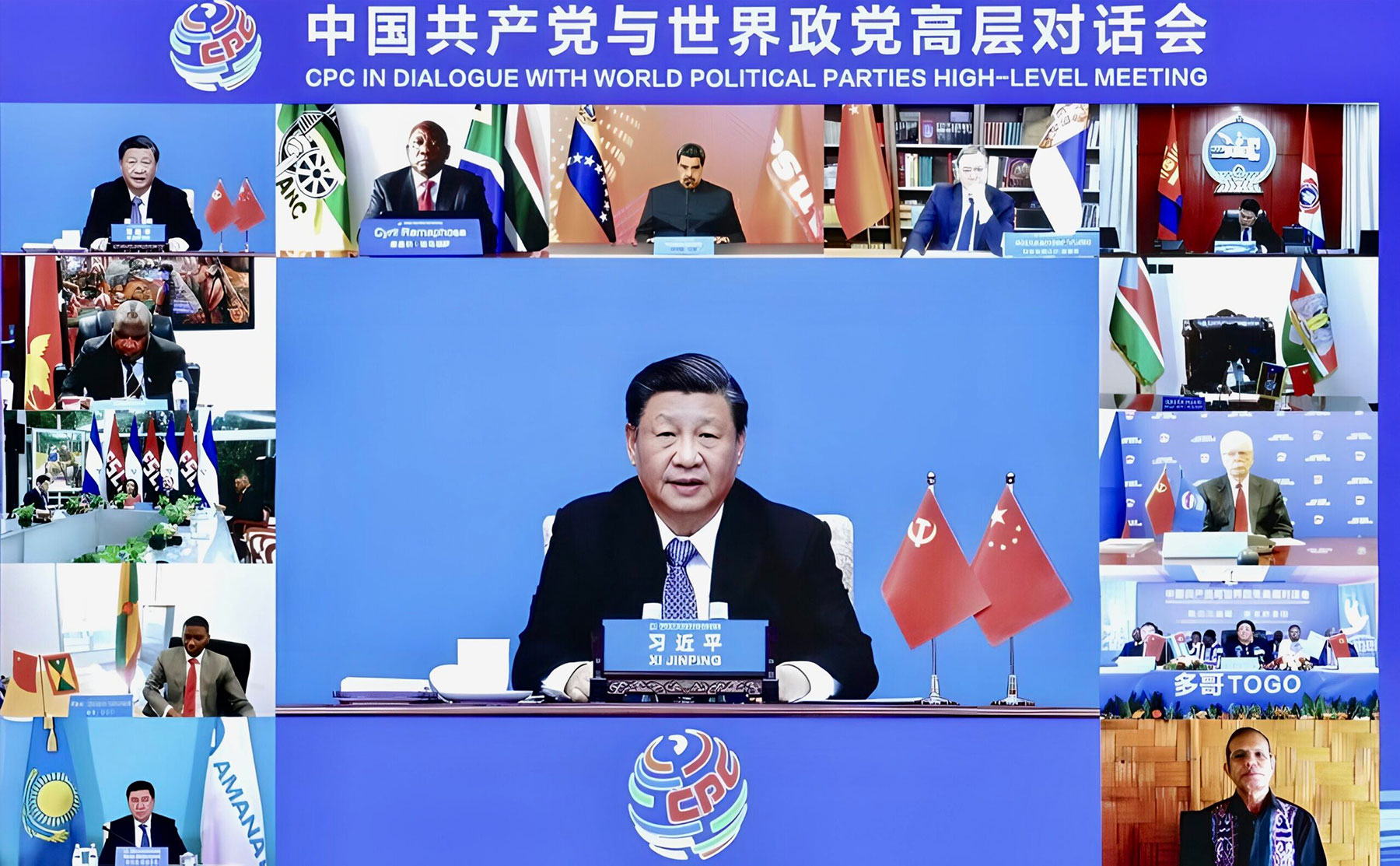
Unpacking GCI: China’s Strategic Vision Comes of Age
Second, historically, Grand Bargains followed large-scale international conflicts that allowed to fix and to measure the new balance of powers within the system. That was the case after the Thirty Years’ War (the Westphalian System), the Napoleonic Wars (the Vienna Concert), the First World War (the Versailles System) and the Second World War (the Yalta-Potsdam System). However, today a direct military conflict between main international actors would almost inevitably turn into a global nuclear war that no actor can afford. Therefore, instead of traditional military conflicts in order to test the changing balance of powers major actors use a variety of substitutes - proxy wars, hybrid wars, economic wars, and so on. The good thing about such substitutes is that allow to control risks and to limit costs of the confrontation, but the bad thing is that do not allow to measure the changing balance of powers in a precise way. All these proxy wars and hybrid wars can last for a long time without defining the ultimate winner. In the absence of the latter, no Grand Bargain is possible. It is very unlikely that by 2035 this situation will change in any radical way; on the contrary, there are reasons to believe that in eleven years from now the range of proxy and hybrid wars will significantly broaden.
If this assumption is right, it means that we are going to live in a fragmented world for an extended period of time. It would be highly desirable to preserve at least some areas of truly global rather than regional cooperation covering relatively non-toxic, but nevertheless critically important areas—such as sensitive technologies, biodiversity, resource management and so on. However, these days even such seemingly technical matters as AI, GMOs, public health and climate change inevitably get political colors and are used by major actors in order to gat advantages over their opponents. This ‘politicization’ of global commons will inevitably set rigid limits for a truly global cooperation in the fragmented world. Such cooperation is highly desirable, but it is likely to reemerge beyond the 2035 horizon.
Project Based Multilateralism
Is it possible to restore the acceptable level of global and regional governance on the “bottom-up” basis, that is, through a set of tactical, situational, transactional agreements on individual specific issues? If so, what are the least toxic and most promising issues in the near and more distant future? How could such agreements evolve into something more strategic, lasting and comprehensive?
Global governance can be approached in two orders: “top-down” and “bottom-up”. The “top-down” approach involves first building consensus at the macro level, identifying basic concepts, ideas, values, frameworks, mechanisms, etc., and then promoting concrete measures on that basis. In contrast, the “bottom-up” approach is to avoid differences on concepts and ideologies in the absence of a macro-consensus, and to promote the step-by-step development of global governance from low to high through concrete and pragmatic cooperation.
The most ideal way is to synchronize and coordinate the “top-down” and “bottom-up” approaches, but in a situation where the major powers are sharply opposed to each other, it will be difficult and lengthy to reach a consensus on their different concepts, ideas, values and visions. Therefore, while promoting global governance at the strategic level, it is reasonable to take the “bottom-up” approach as the main breakthrough, so that through the accumulation of achievements in cooperation on specific issues, promote global governance to an increasingly large scale and an increasingly high level.
The “bottom-up” approach to restoring global governance has a number of shortcomings and potential liabilities. First, narrowly defined topics provide little room for compromises since the sides cannot expect each other to match concessions in one area by reciprocity in another area or at some unspecified point in future (what they call in IR theory ‘diffused reciprocity’). Second, the “bottom-up” approach is slow in building trust between the sides, because it usually does not address core matters of security or development and focuses on relatively small, mostly technical matters. Third, this approach seldom captures public attention and this is why it is not easy to generate a broad public support for tactical and technical agreements that it may deliver.
Still, some of its limitations can be regarded as potential comparative advantages as well. As a rule, small and incremental agreements can be kept below the political radar screen and they do not need cumbersome and politically complicated ratification procedures. The more technical an issue under consideration is, the more active role it can offer to experts expanding their autonomy from politicians. Besides, as we well know from history, linkages are not necessarily a positive factor in negotiations; on many occasions linking one problem to another brought additional complicating factor into the process of negotiations and delayed reaching a mutually acceptable agreement.
If we were to consider the most promising thematic priorities for such “bottom-up” approach to rebuilding global governance for the period between 2024 and 2035, it would make sense to focus on the three critical areas. First, common security threats (e.g. proliferation of nuclear weapons and other means of mass destruction, international terrorism, hi-tech crime). Second, new sensitive technologies related challenges (AI, cyber and biotechnologies, Internet management, GMOs and molecular engineering). Third, complex relations between the humankind and its environment (climate change, biodiversity and environment protection, resource management and the shift to sustainable development). In all of these three areas one should start with relatively small, incremental steps gradually proceeding to more comprehensive and potentially more politically divisive aspects of global management.
It remains on open question whether in any of these broadly defined areas any substantial progress can take place by 2035. Each of them has its own combination of stakeholders, change drivers, political and technical obstacles, implementation mechanisms and verification challenge. Each one of them has its own logic and its own momentum, though, in the end of the day, all the three are interconnected and interdependent, so any success stories or failures in one area would have a significant impact on the other two.
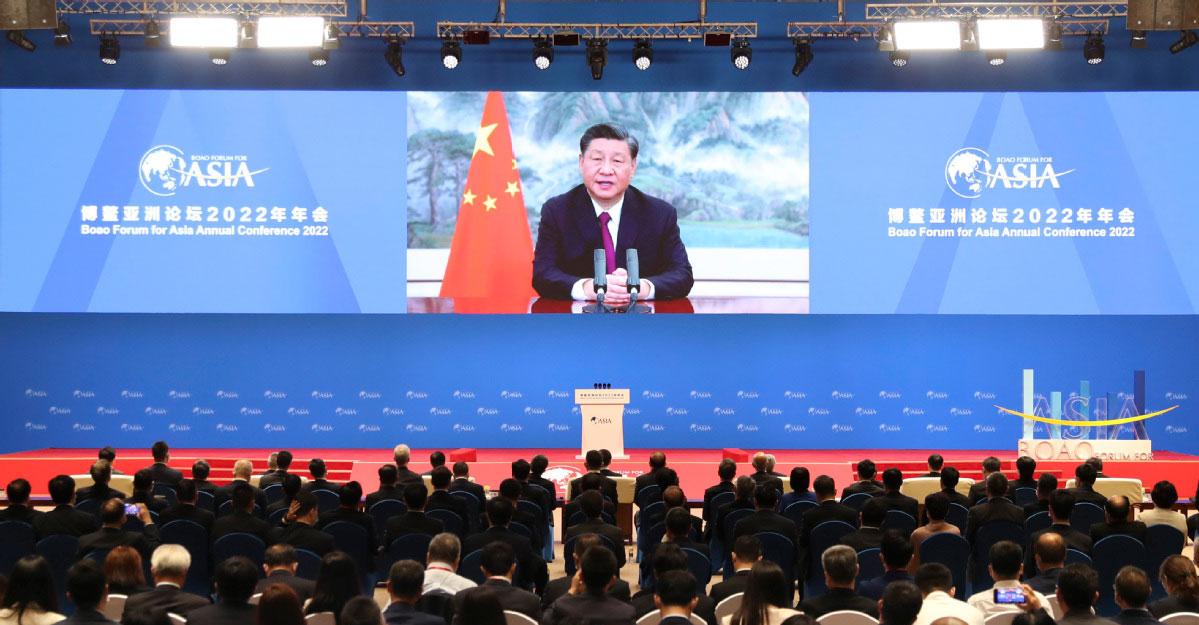
Decoding China: GSI and Beijing's International Role
On the other hand, it seems that at least in some of the abovementioned problems the world is indeed approaching the point of no return, beyond which our ability to put the negative trends back under control will simply come to an end. Maybe, the most appropriate approach would be to focus on the most immediate dangers that cannot be put on a back-burner till 2035, though to reach consensus on the priorities short-list would already be quite a formidable challenge.
Implications for Russia and China
What does this mean for Russia and for China? What role could our each of the two countries play in the formation of a new world order, based on the changing balance of power in the world, as well as objective resource, demographic, technological and other constraints? Are there any areas in which Russia and China have comparative advantages that allow it to claim global leadership? How could these benefits be “operationalized”?
If we are talking about Russia in 2035, we can assume that by this time the ongoing conflict in Ukraine is already over and that some kind of accommodation with the West is already achieved. Such accommodation will be staged and partial; the odds are that even in 2035 some of the US and EU sanctions imposed on Moscow in 2022–2024 will still be in place. It is unlikely that the pre-2022 pattern of Russia-West relations can be restored in full even in eleven years from now. Russia’s pivot to Asia is going to continue even if a direct military clash with NATO is successfully avoided and some level of cooperation with the West is restored. At the same time, Russia will continue to explore opportunities in other regions of the world, including Middle East, Africa and Latin America.
However, by 2035 Russia will need to find its proper place in the new international system that will be very different from what we see today. In particular, Russia will have to secure its place in the global economy after the fourth industrial revolution. Its current role as a key provider of hydrocarbon resources and select raw materials is not likely to remain sustainable even in 10—15 years from now. The global oil consumption may peak in early 2030s or even earlier, while the global gas demand is going to reach its peak some five—seven years later. Moscow might experience significant problems in trying to maintain its current share in the global arms markets or space launches, where many newcomers will aggressively fight for new contracts. That implies deep changes not only in Russia’s foreign economic policies, but also in the overall national modernization strategy that has to move further away from the early 2000s model. The transition will also be incentivized by long-term demographic problems that are not going to disappear in 2035.
One of the options for 2035 and beyond would be to position Russia as a “green country”, that is to put major emphasis on preservation, environment protection and “green production”. Given the sheer size of the country, abundance of diverse natural resources and still undeveloped spaces, Russia might find itself in an advantageous position within the condensed and crowded world of 2035. At the same time, Russia can still demonstrate its comparative advantages in certain areas of fundamental science, R&D, education, public health and urban planning. The key challenge in all these areas would be to unleash the creative potential of the Russian society and to retain the best and the brightest minds under the conditions of an intense international competition for human capital.
Finally, together with other great powers, Russia might perform the functions as a security provider. These functions may extend to a part of the post-soviet space and to unstable parts of the world like Middle East and Africa. Ideally, such engagement should take place under the auspices of the United Nations, but, as it was pointed out earlier, the efficiency of UN is not likely to increase dramatically by 2035; therefore, security arrangements between Moscow and its partners are likely to take place through appropriate bilateral or multilateral agreements. One can conclude that the future of Russia’s international stature will depend on the country’s ability to contribute to various global commons and to position itself as a reliable and predictable international partner.
In the medium and long term, the international environment in which China finds itself is likely to become more complex, and the international challenges it faces are likely to become more severe. In the future, the dynamics of great power relations will change, and the positions of Russia-US and China-US relations in US diplomacy may be swapped. After the end of the war in Ukraine, Russia may no longer be the "most direct threat" to the United States with Russia's relations with the West easing. At the same time, China-US relations will become the most direct focus of the United States. This is not to say that Russia-U.S. relations will turn friendly and China-U.S. relations will necessarily deteriorate, but only that Russia-U.S. relations will be relatively less challenging for U.S. diplomacy, and China-U.S. relations will become the most prominent challenge to U.S. diplomacy. This means that the United States will turn more attention and resources to the Asia-Pacific region, more vigorously promote the United States-led exclusive political, security and economic mechanisms with the aim to establish strategic containment on China, at the same time, NATO's activities will also be further extended to the Asia-Pacific region, so that China's strategic security environment is more unfavorable. And the heat of the hotspots of the South China Sea, the Taiwan Strait, and Northeast Asia will not cool down, but may be ever hotter, in a state more prone to outbreaks.
But China's role in the international order building will be only higher. This is first and foremost because China's international influence will remain on an upward trend. China's economic development may be sometimes faster and sometimes slower, but China's position as one of the most powerful countries in the world in terms of overall national power is solid. Many people often predict whether it will overtake the U.S. and become the first largest world economy, but China does not see surpassing the United States as its development goal. China has its own development needs and development trajectory, the most important thing for it is to continue to move forward so that the country's strength will continue to grow, to meet the domestic population's higher and higher living needs.
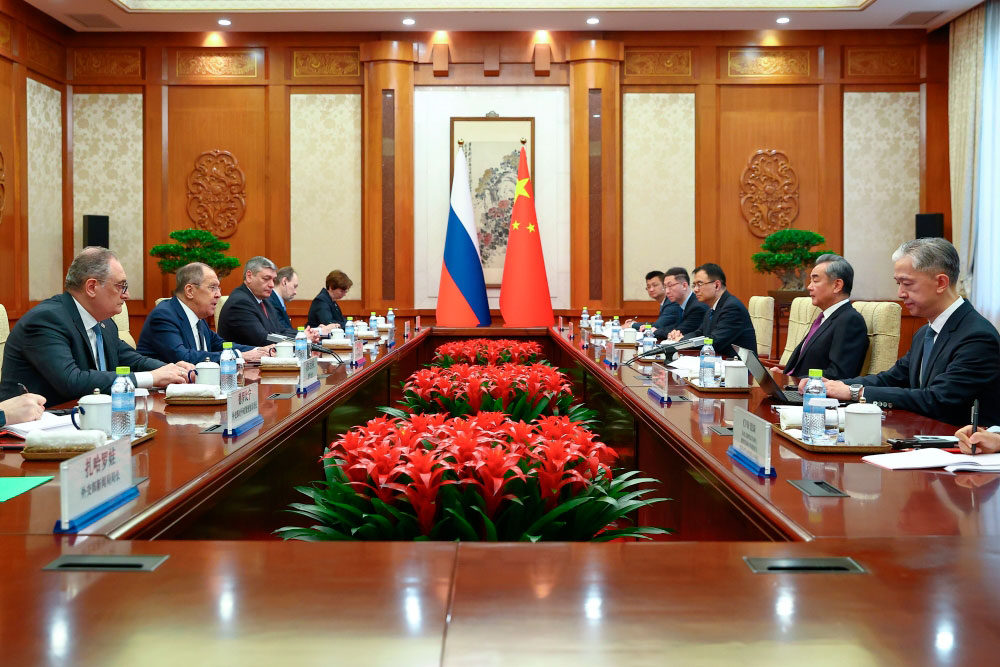
Eurasian Security Structure: From Idea to Practice
China's “personality” in the construction of the international order will be more distinctive, as it will participate more actively, will be willing to put forward its own vision, provide more resources and play a greater role in it. China has already put forward its own conceptual ideas, which takes the community of human destiny as its overall framework, with the Global Development Initiative, the Global Security Initiative and the Global Civilization Initiative as its supporting parts. China views this issue from a global perspective and is oriented towards the formation of a harmonious and unified international order and global governance mechanism.
Imperatives of Cooperation
In this period, when the former international order is collapsing and a new one has yet to take shape, Russian-Chinese cooperation in this sphere should be conducted in a constructive way, oriented towards stabilization, and aimed at updating the irrationalities and inequities in the existing international order by means of new constructions, rather than destroying all the old order and mechanisms regardless of the consequences.
As two permanent members of the United Nations Security Council, China and Russia have an important responsibility to safeguard the existence of the United Nations, the world's most broadly representative multilateral mechanism, and should endeavor to adapt the United Nations to the changes of the times through rational reforms, to restore its authority, to enhance its effectiveness and to regain its central role in international affairs.
China and Russia, either as a member of the global South or as its partner, should work together with the Global South in the international order building and global governance. The Global South is not an entity and is not clearly defined; it is internally diverse and does not have exactly the same aspirations; therefore, it cannot be expected to form some kind of monolithic cooperation mechanism, but it is possible to form a grid-like form of cooperation that is multilevel, multidisciplinary and multiformat.
The SCO and BRICS are originally platforms for political, economic, security and humanistic cooperation among their participants, but as they have expanded and developed, their functions have begun to expand and their impact on the international order and global governance has grown. On the one hand, these two mechanisms already have a large number of members and will have more, with a trans-regional or even global scale, and are already broadly representative both politically and economically; on the other hand, as cooperation mechanisms composed of countries with different political systems, ideologies, religions and civilizations, their practices is also a valuable source for learning for international order building and global governance. China and the Russia are both major participants in these two mechanisms, and therefore, in their cooperation, the two countries should also pay more attention to combining it with the promotion of international order-building and global governance.
Also available in Chinese.
(votes: 3, rating: 4.67) |
(3 votes) |
Have emerging powers got the resources to reshape the world order?
Decoding China: GSI and Beijing's International RoleThe recognition of interdependence between security and development suggests that China is likely to become more active in global and regional security matters than it has been ever before
The International System between Crisis and RevolutionWorld politics is fast degrading into a zero-sum game
Prepare for the Worst and Strive for the Best. Russia’s and China’s Perceptions of Developments in International SecurityInterview with Andrey Kortunov and Zhao Huasheng
Unpacking GCI: China’s Strategic Vision Comes of AgeIn the classroom of civilizations, there can be no omniscient teachers and obedient pupils
Eurasian Security Structure: From Idea to PracticeThe principle of indivisibility of security, not implemented in the Euro-Atlantic project, can and should become key for the Eurasian structure



